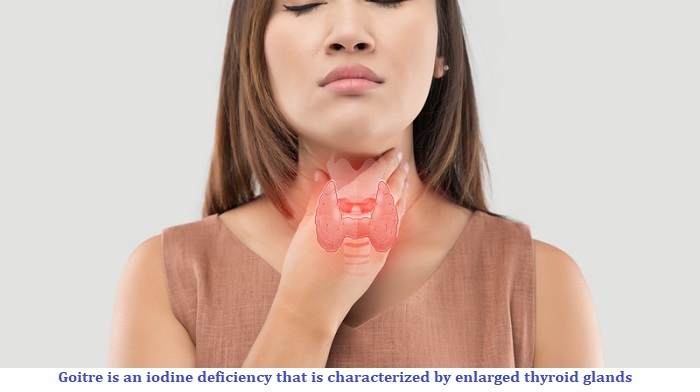

 Epidemiology is commonly referred to as the study of the incidence and causes of disease and injury in the common population. Epidemiological anthropology focuses on population diversity in prevalence and distribution, and it clarifies the aetiological elements involved in a disease’s incidence. Human development follows a medically predetermined path, however, environmental variables profoundly affect continuance and medical condition. Therefore, diseases display the full range of causes, from inherited to elements that play a major role in the atmosphere.
Epidemiology is commonly referred to as the study of the incidence and causes of disease and injury in the common population. Epidemiological anthropology focuses on population diversity in prevalence and distribution, and it clarifies the aetiological elements involved in a disease’s incidence. Human development follows a medically predetermined path, however, environmental variables profoundly affect continuance and medical condition. Therefore, diseases display the full range of causes, from inherited to elements that play a major role in the atmosphere.
In the earlier, health was viewed as simply the absence of illness. It is more commonly associated with the state of mental and physical health now. A condition that weakens an organism's body, tissues, organs, or cells is referred to as a disease. Statistics is the source of all human knowledge regarding the trends in sickness and health in populations.
The relationship between man and the environment is one of competition. A biological environment that is susceptible to adaptive reactions occurs in addition to immutable and inactive competitors like physical and climatic conditions.
The ecological aspects of disease
It is an immediate and specific cause of harm and illness.
As a reason, there is a distinct geographic distribution of diseases caused by extreme climate effects, such as heat-related illness in the desert, mountain sickness at high altitudes, and rodent ulcers.
Smoke-related air pollution and other related pollutants have now elevated a significant environmental risk in many nations.
The biological element of the environment is host to harmful animals, poisonous plants, and pests in addition to microbial pathogens.
Moreover, nutritional issues develop due to the poor utilisation of vegetables and animals.
A psychological condition is an inability to comprehend and react to demands and events from the outside world, whereas a genetic flaw may relate to the person's incapability to sustain himself.
The extinction of numerous species has resulted from this struggle for survival. The diseases are the result of interactions between humans and other living things, and they are stages of the ecological struggle that are not yet fully resolved in favour of humans.

The entire set of environmental influences and biological responses must be taken into consideration in non-infectious diseases. Numerous illnesses have been classified as having a “racial pathology,” but external factors determined their prevalence.
which is widespread among Africans, appears to be an effect of liver cirrhosis, which is also very common. People have had a diet that is chronically high in carbs and low in animal protein from birth.
It is well-recognised that several illnesses and birth defects have a genetic component; the person who is affected is typically homozygous for the recessive gene, however, certain situations also include dominant genes.
Thalassemia and sickle cell anaemia are haemolytic diseases of infants that are caused by abnormalities in haemoglobin genes. People with blood group O have a higher risk of developing intestinal ulcers, while people with blood group A are more likely to develop stomach cancer than some other blood types.
A biological mismatch between the body's requirement for energy and nutrients for development, maintenance, and specialised function is known as malnutrition. A nutritional shortage occurs when the body doesn't get enough of a certain nutrient or is unable to absorb it.
Vitamin A, iodine, folate, and iron deficits are some highly prevalent nutrient deficiencies that can have severe repercussions. Body tissues can grow and sustain themselves with the help of nutrients.
Scurvy is the earliest vitamin deficiency disease, and it is the first to be healed by supplementing a vitamin in the food.
Haemorrhaging is a common sign of scurvy. Bleeding, tiredness, irritability, and sorrow are common symptoms.
The synthesis of the two hormones thyroxine and triiodothyronine by the thyroid gland, which maintains the body's base metabolic rate, depends on iodine.
Due to a lack of iodine in the diet, the thyroid gland starts to grow its cells in a try to manufacture the hormone, resulting in a goitre, and swelling around the neck.

The two main forms of protein-energy undernutrition that are recognised by healthcare professionals across the globe are kwashiorkor and marasmus.
The primary distinction between the two is that marasmus results from a lack of all three macronutrients; protein, carbs, and fats whereas kwashiorkor is mostly a protein deficit.
The most prevalent dietary deficit in the world is iron deficiency, which is also one of the major reasons for increasing the epidemic of disease on the planet.
Anaemia, a blood disorder that causes exhaustion, weakness, lightheadedness, and inadequate immunological support, can also be caused by an iron shortage.
Epidemiological anthropology explains how different diseases are caused, present, and distributed as well as the impact that malnutrition plays on ecological circumstances. The spectrum of risk factors for the disease includes both inherited and environmental influences. The ecological features of diseases are influenced by both the biotic and abiotic elements of the environment. The epidemiological elements take into account both infectious and non-infectious disorders. Some other factor that contributes to the development of some diseases is malnutrition.
Q1. What are the various factors responsible for infectious diseases?
Ans. Human demographic changes, technology and globalisation, ecological changes, travel and commerce, breakdown of public health measures, and microbial adaptation and change are the common factors responsible for infectious diseases.
Q2. What is the concept of Epidemiological Anthropology?
Ans. Epidemiology refers to the study of the prevalence and causes of health-related conditions, occurrences, or states in a given population and the implementation of the study's findings to the management of health issues. It is a statistical study focused on controlling and preventing infectious diseases by understanding the conditions that lead to disease processes.
Q3. How does malnutrition affect the economic growth of a country?
Ans. Adults have become less likely to work, support their communities, and economies, and take care of their families when they are undernourished. Children born to underweight moms are more likely to experience physical and cognitive impairments later in life.